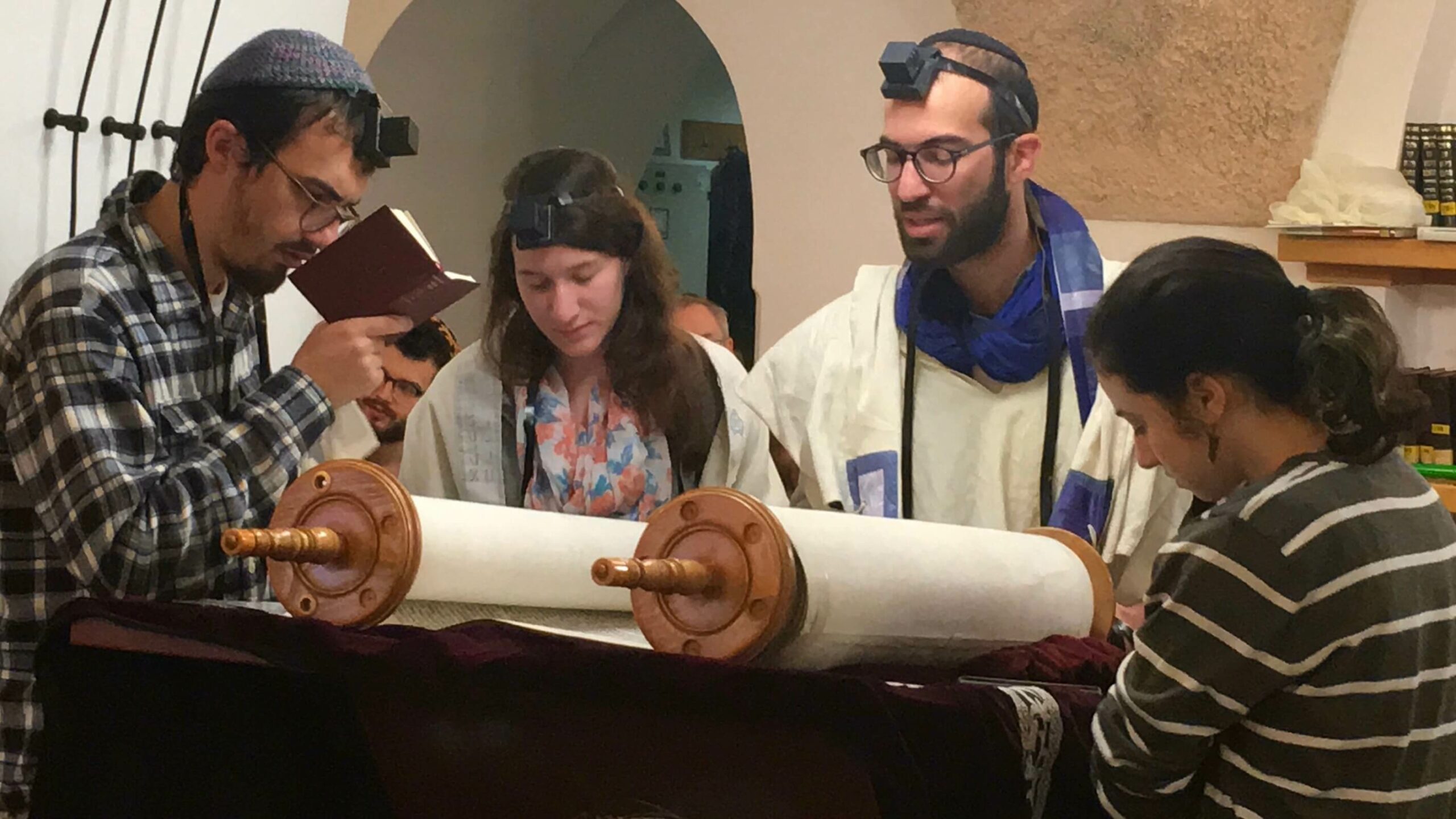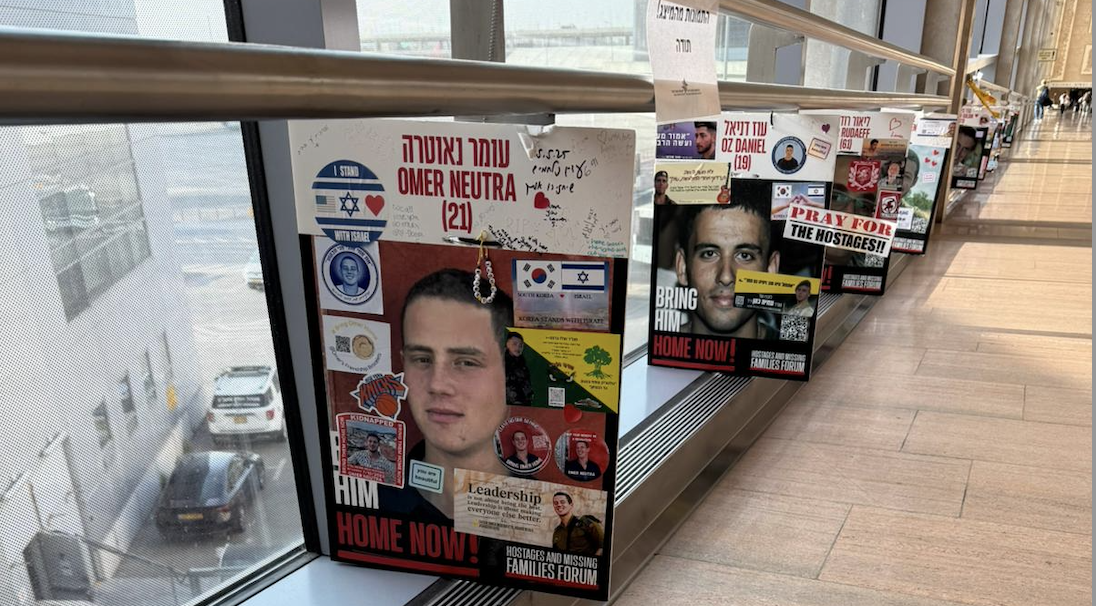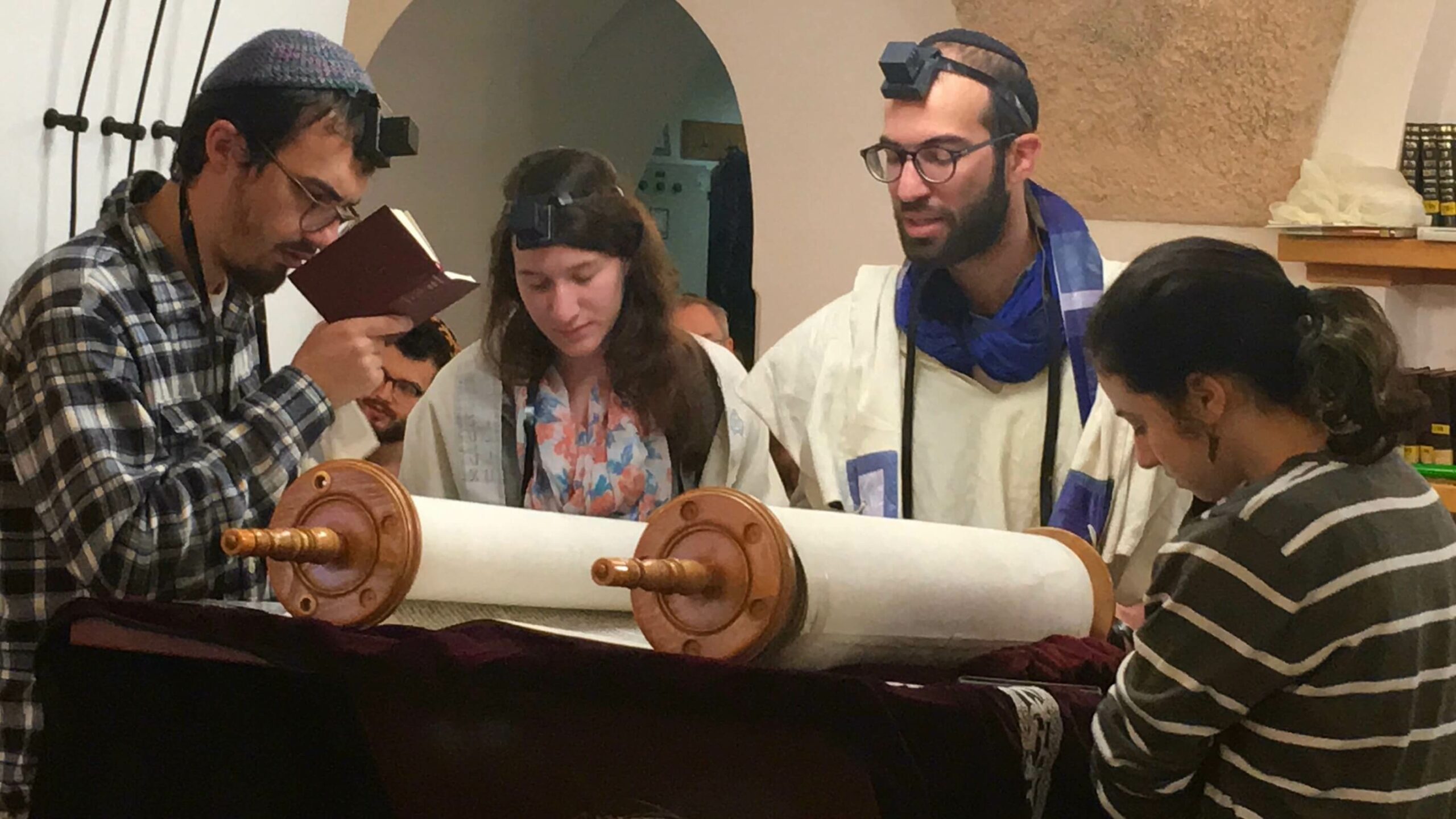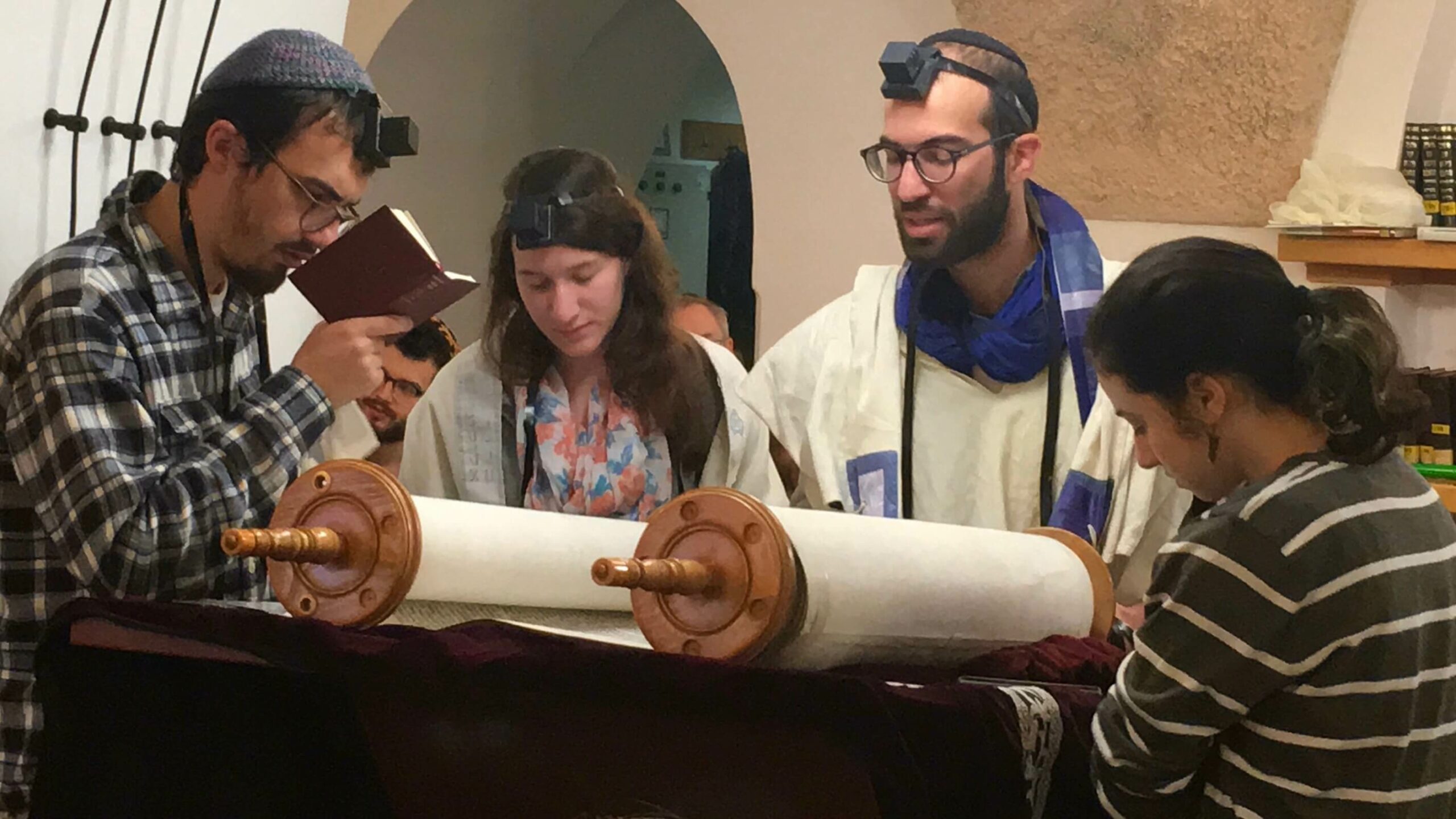

TORAH SPARKS (print friendly version)
Parashat Vayakhel Shabbat Shekalim Shabbat Mevarekhim Hahodesh March 2, 2019 I 25 Adar I 5779
Annual | Exodus 35:1-38:20 (Etz Hayim p. 552; Hertz p. 373)
Triennial | Exodus 35:1-36:19 (Etz Hayim p. 552; Hertz p. 373) Maftir | Exodus 30:11-16 (Etz Hayim p. 523; Hertz p. 352)
Haftarah | 2 Kings 12:1-17 (Etz Hayim p. 1276; Hertz p. 992)
D’var Torah: Revealing Hidden Talents
Rabbi Jim Michaels, Conservative Yeshiva Student
This week’s Torah portion focuses on the construction of the Mishkan. In the three previous portions, the Torah has described everything about this portable place of worship, both the edifice and the holy objects inside. This week and next, we read how the plan was executed in faithful detail.
The “lead architect” for the project was Betzalel. The rabbis understood the name to mean “In God’s Shadow,” indicating that his appointment was ordained by God, who extended divine providence toward him. Various rabbinic legends convey different aspects of his commission.
Rashi points out that Betzalel was a great-grandson of Miriam. That means he came from a distinguished family which had status in the community. His assistant was Oholiab who, according to Genesis Rabbah, was not considered to be distinguished in stature or status. Nonetheless, the two men worked together, regardless of their family origins. The Rabbis learn from this that the work of the Mishkan was to be a democratic process. Everyone’s efforts were welcome and important.
It’s legitimate to ask about Betzalel’s qualifications for this important task. Certainly, he never had any on-the-job experience, so what were his credentials? To answer this question, the Torah describes him as being chacham leiv. The term literally means “wise of heart,” but the traditional understanding is that Betzalel (and all who worked on the project) had skills which had been unrealized and untapped. Midrash Tanchuma says that God grants wisdom to those who already have it. God knew Betzalel had artistic potential and allowed him to put it into practice.
In my experience working in a large senior residence, I saw how this can play out. Many residents had never participated in arts or crafts projects. They often said they had been discouraged in their formative years. We encouraged everyone to take part, with or without prior experience. Many who went to these activities discovered talent they never knew they had. Several entered paintings in judged competitions; one woman was thrilled when her painting was actually sold!
This self-discovery extended beyond the creative arts. One 99-year old man had never expressed interest in attending religious services. One morning, he stopped me while he was eating breakfast and asked if I could bring him to our daily minyan. “I’ve made a new year’s resolution,” he said. “I want to come to services every day for a year.” I was glad to affirm his request and brought him in his wheelchair to the synagogue that same day. He easily kept his resolution and continued for another year. “I never realized I could find so much fulfillment while sitting in the synagogue,” he said.
Over the past two months, I’ve seen another example of this concept. I have been studying at the Conservative Yeshiva, along with many young students, just starting on their path of Jewish learning. Some are rabbinical students, but many others are simply there for Torah lishmah – study for its own sake. They come from all over the world. They’ve discovered skills in Hebrew and Jewish texts and have derived great satisfaction from their studies. It has been an inspiration, one which is available to all.
The old saying goes, “You can’t teach an old dog new tricks.” The concept of chacham leiv contradicts that notion. Each person has many untapped skills and talents. We only need to try. Perhaps, like Betzalel, we’ll find those new talents and put them to use for personal and universal benefit.
Rabbi Jim Michaels recently retired as Director of Pastoral Care of the Charles E. Smith Life Communities in Rockville, MD. He currently is studying at the Conservative Yeshiva in Jerusalem.
Parashat Vayakhel Self-Study
Vered Hollander-Goldfarb, Conservative Yeshiva Faculty
We have reached the point of action. After receiving lengthy instructions for building the Mishkan (Tabernacle), it is finally happening. What will it look like when put into practice?
Note that this is Shabbat Shekalim, the first of several Shabatot on which we read a special Maftir (last section of Torah reading). This Maftir is found in the beginning of last week’s reading.
1) Few sections of Torah state that they were told to the entire congregation, but this Parasha opens with a gathering of EVERYONE in the congregation (35:1). Why do you think that Moshe would be reluctant to address the entire people together?
2) Moshe warns the people against creative work (melakha) on Shabbat, for that there are the other 6 days. Then he mentions the prohibition against lighting a fire on Shabbat (35:2-3). Why do you think that he mentions this particular action?
3) Betzalel, the artist and craftsman, is gifted with the knowledge and talent to work with all the precious materials. He is also able to teach (35:34). Why does this need to be mentioned? How do you think this affected the work on the Mishkan?
4) When instructed to build the ark, Moshe is told to place the Covenant in the ark (25:16). When Betzalel executes the directions given to Moshe, that detail is missing (37:1-9). What might be the reason?
5) Shabbat Shekalim: Every person who can be counted in the census, from the age of 20, has to give ½ a shekel ‘atonement/ransom for his life’ (30:12). This was given to the Mishkan, and everyone gave an equal amount. How do you think that this was put to use so that it would constitute ‘atonement’ for the people?
D’var Haftarah: Important Reminders
Rabbi Mordechai Silverstein, Conservative Yeshiva Faculty
This Shabbat, Shabbat Shekalim, marks the first of four special Shabbatot which precede Pesah. It was intended as a reminder to people that it was time to pay the half-shekel tax used to provide the communal sacrifices and for the upkeep of the Temple. The haftarah for this special Shabbat recounts an episode during the period of the Kings when there was a need to ensure the proper collection and dispersal of these funds: “And it happened in the 23rd year of King Joash, that the priest did not repair the breaches of the House. And King Joash called to Jehoiada the priest and to the priests and said to them: ‘Why are you not repairing the breaches in the House? And now, do not take silver from your acquaintances but give it for repairing breaches of the House. And the priests agreed not to take silver from the people, and not to repair the breaches of the House. And Jehoiada took a certain chest and bored a hole in its door and set it by the altar on the right. When a man came into the House of the Lord, the priests, guardians of the threshold, put into it all of the silver brought into the House of the Lord.” (8-10)
The collection box was placed where all could see it in order so that they would fulfill their obligations. Some in the rabbinic tradition took notice of its placement at the entrance to the Temple on the right hand side and learned from it that this would also be the appropriate place for the mezuzah, which contains Scriptural references to the first two paragraphs of the Shema, and should also be placed on the right side when one enters a dwelling place, as indicated in this passage from the Talmud: “It was taught [in a Baraita]: ‘[Upon the doorposts of] your house (beitecha)’ (Deut. 6:9): that is, [the mezuzah should be placed] upon the right side as you enter. [The Talmud asks:] You say, the right side, but perhaps it is not that but the left side? The verse therefore says, ‘your house’. How is this derived [from the verse]? Rabbah explained, ‘As you enter (biatcha)’ implies the right side, for when someone steps [into his/her house] they step in with the right foot first. [Rabbah makes a word play “beitecha-biatcha”.] Rabbi Samuel ben Aha quoting Raba ben ‘Ulla derived it in the presence of R. Papa from the following verse: ‘And Jehoiada the priest took a chest, and bored a hole in its door, and set it by the altar on the right. House of the Lord, the priests, guardians of the threshold, put into it of the silver brought into the House of the Lord’.” (Menahot 34a)
The Sages in this midrash are interested in helping people maintain certain key priorities in their lives and it is their sense that it does not hurt to “bump” into the things that are important on a frequent basis. Having the chest used to collect the funds for the maintenance of the Temple in the most public place was a clear reminder of its collective importance. And it is no less significant to have a mezuzah in the most recognizable place so that it might serve as a constant reminder of our steadfast faith.








